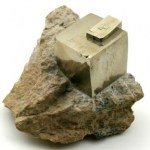Speaking of sulfur: This common element turns out to be highly useful for understanding planetary processes – both on Earth and Mars. Two new papers by Dr. Itay Halevy use sulfur chemistry to understand the history of sulfur-loving microbes at the bottom of the ocean and the compounds spewed from Martian volcanoes that may have created brief Martian “springs.”
Sources of sulfur: Olympus Mons on Mars and sulfate-reducing bacteria that live in water on Earth (inset)
On the ocean beds, microorganisms “breathe” sulfur: They take in sulfate – an abundant compound of oxidized sulfur, and use it…
Itay Halevy
You’ve heard of the carbon cycle, maybe even the nitrogen cycle. But have you given much thought lately to the sulfur cycle? New research in last week’s Science suggests that we should be paying a bit more attention to the way this element moves through the atmosphere, biosphere, oceans and land. Over the last 500 million years, sulfur seems to have played a fairly crucial role in keeping the oxygen levels in the atmosphere at a nice, breathable 20%.
It is microbes and weather that do the work. Microorganisms in the ocean take in sulfur in the form of dissolved sulfate – that is, in a sulfur…

